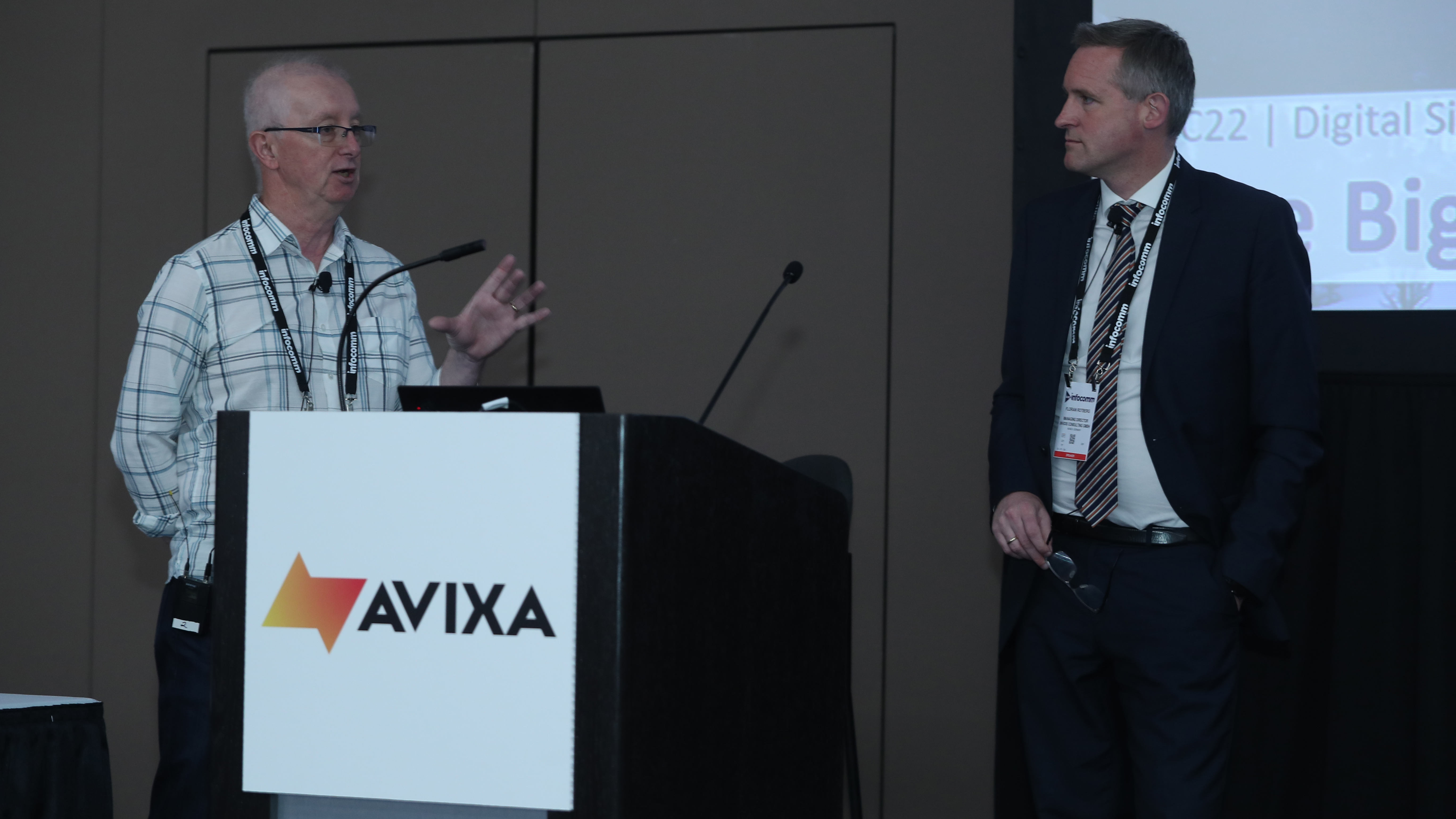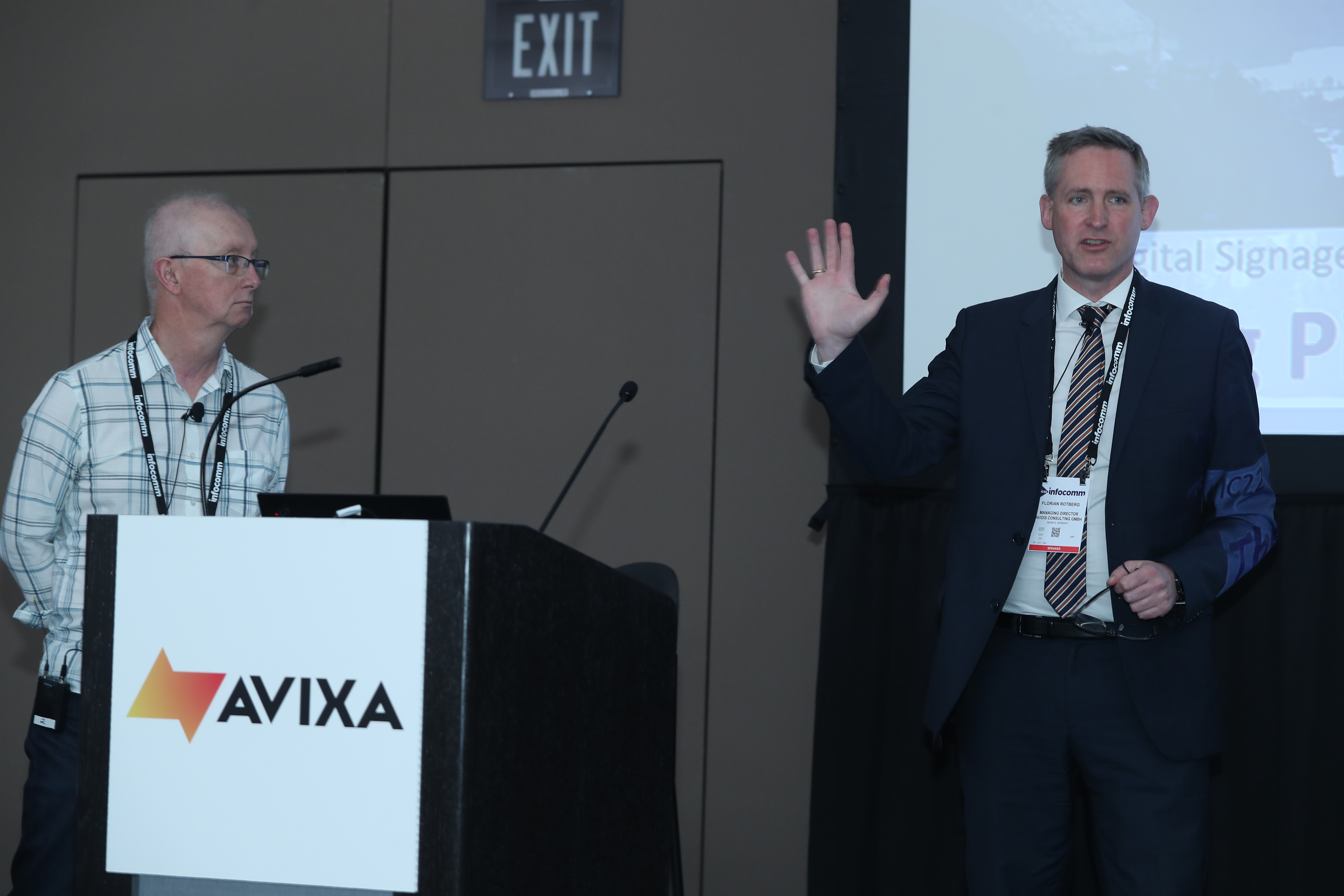Digital Signage at InfoComm 2022: Business Critical
Wednesday's InfoComm 2022 session focused on ongoing trends in the digital signage space, including supply chain issues.

At Wednesday’s Market Insight Lunch, managing director for Invidis Consulting Florian Rotberg and David Haynes, publisher/editor for Sixteen:Nine, walked attendees through the ongoing trends in the digital signage space. Chief among these trends were insights on the unfortunate supply chain issues affecting most of the AV industry, why sustainability in digital signage is important and how entirely business-critical digital signage has become across a vast number of industries.
The lunch started off with the encouraging news that 2021 defied all expectations by having an extraordinarily strong post-lockdown rebound, with global units in the digital signage space seeing a year-over-year growth of 21%. This information reinforced the notion that while recovery has been slowed down by supply shortages, the industry trend is on mark for a continuous uptick for market size.
[InfoComm 2022 Impulses: Trends and Technologies to See in Las Vegas]
The causes of these supply shortages were covered in detail, including the shocking fact that, as of April 2022, 12% of all shipped goods worldwide are stuck in ports. Additionally, 60,000-80,000 truck drivers are currently unavailable, many of whom are from Russia or Ukraine. Though in recent years the Asian digital signage industry has chiefly switched to cargo trains for transport with great success, 10,000 kilometers of this railway go through Russia. This has obviously made the option of cargo train transport unfeasible, compounding supply chain complications. As a result of these difficulties, manufacturing has shifted closer to markets. The industry is taking up creeds of “make where we sell” and “source where we make.”

Sustainability and “green signage” were also emphasized in the presentation. An oft-overlooked consideration of digital signage is the cost of electricity. A key example Rotberg highlighted was the case of 1000 outdoor displays for the Shell Corporation, measuring 85 inches each. While this rollout in South Korea costs only $1.35 million U.S. a year in electricity, the same rollout costs a whopping $4.8 million U.S. in Germany, notably more than the hardware itself. Furthermore, the 2021 prognosis for the development cost of energy in 2030 is estimated to grow by 50%. These facts point to a great need for sustainable options in the signage space, as energy will only become more expensive worldwide.
[D=SIGN Conference Addresses Multiple Elements of Digital Signage Installations at InfoComm 2022]
The good news, however, is that digital signage has become business-critical in almost every conceivable industry. From hospitality and commercial spaces to manufacturing, digital displays have become absolutely essential in day-to-day operations. Manufacturing in particular has been a surprise area of growth, with companies turning to interactive displays to efficiently organize and share data crucial to operations. As the market continues to grow and digital signage becoming a key facet of collaboration among coworkers, as well as an important avenue for growing customer-company relations, this particular area of the AV industry will continue to prove itself an essential component of all markets.
A daily selection of features, industry news, and analysis for AV/IT professionals. Sign up below.
Derek Wiley is the content producer for Sound & Contractor and TWICE. Chiefly having a production background, Derek is quickly becoming a Pro AV enthusiast. When not writing, he enjoys all things gaming, music, and live events.
